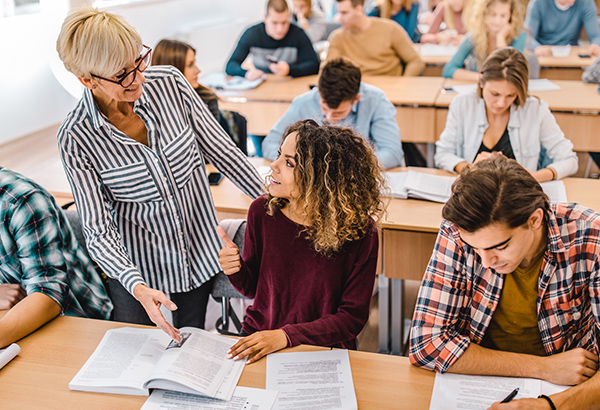In a diverse classroom, students possess different learning styles and preferences. To ensure effective education, teachers must employ teaching strategies that cater to these diverse learning styles. By understanding and adapting to students’ individual needs, educators can create an inclusive and engaging learning environment that maximizes students’ potential. Today in this blog, we’ll explore various teaching strategies that can be implemented to accommodate different learning styles and enhance the educational experience for all students.
Understanding Learning Styles
“Learning styles” refer to people’s preferred methods of information intake, processing, and retention.Kinesthetic, auditory, and visual learning styles are the three primary types of learning styles. Visual learners can absorb information more completely when it is presented in the form of charts, diagrams, and other visual formats. Explanations, lectures, and conversations are all best conveyed verbally for auditory learners. Kinesthetic learners benefit tremendously from getting their hands dirty and participating in hands-on activities.
Now that you have an idea of learning styles let’s discuss some effective teaching strategies:
Incorporating Visual Elements
Visual learners benefit from the use of visual aids, such as charts, diagrams, and infographics. Teachers can use multimedia presentations, slideshows, and videos here to reinforce key concepts. Encouraging students to create visual representations of their learning, such as mind maps or drawings, also enhances comprehension.
Engaging Auditory Learners
Auditory learners thrive in discussions, debates, and lectures. Teachers can incorporate group discussions, peer presentations, and debates into the classroom. Providing audio recordings or podcasts related to the subject matter can help reinforce learning. Additionally, verbal repetition and mnemonic devices can aid auditory learners in retaining information.
Emphasizing Hands-On Activities
Kinesthetic learners learn best through physical engagement. Teachers can integrate hands-on activities, experiments, role-playing, and simulations into their lessons. This allows kinesthetic learners to actively explore and manipulate objects, deepening their understanding of abstract concepts. For more insightful articles and resources on effective teaching strategies, be sure to visit rambuseducation.com, a valuable blog site dedicated to empowering educators and enhancing student learning experiences.
Adapting Instructional Materials
To accommodate diverse learning styles, teachers can offer a range of instructional materials. This includes providing written texts, visual aids, audio recordings, and interactive online resources. By offering multiple mediums for accessing information, teachers can cater to the needs of various learners and promote inclusivity.
Differentiated Instruction
Differentiated instruction involves tailoring teaching methods and materials to address individual student’s learning styles and abilities. Teachers can provide varied assignments, projects, and assessments to meet the diverse needs of their students. By offering flexible learning paths, students can engage with content in a way that suits their learning style, fostering motivation and success.
Cooperative Learning
Cooperative learning activities encourage collaboration and interaction among students. Group projects, discussions, and peer tutoring provide opportunities for students to learn from and support each other. This approach benefits all learning styles by promoting social engagement, fostering deeper understanding, and encouraging the development of communication and teamwork skills.
Technology Integration
Integrating technology in the classroom can cater to various learning styles, making education a dynamic and interactive experience. Teachers can incorporate educational apps, online simulations, interactive websites, and multimedia resources to engage students and foster a deeper understanding of the subject matter. With technology, the classroom becomes a hub of exploration and discovery, the students can go here in these classrooms to learn at their own pace, delve into their interests, and unleash their full potential.
Conclusion
For effective teaching, it is essential to understand and accommodate different learning styles. By using diverse teaching methods, educators can create a welcoming classroom for all students. Teachers can meet the individual needs of students by adapting materials, using differentiated instruction, promoting collaborative learning, and integrating technologies. This holistic approach to learning ensures that the students are actively engaged with the material and maximize their learning potential.



